
How to Use PCF8575 I2C Expander: Examples, Pinouts, and Specs
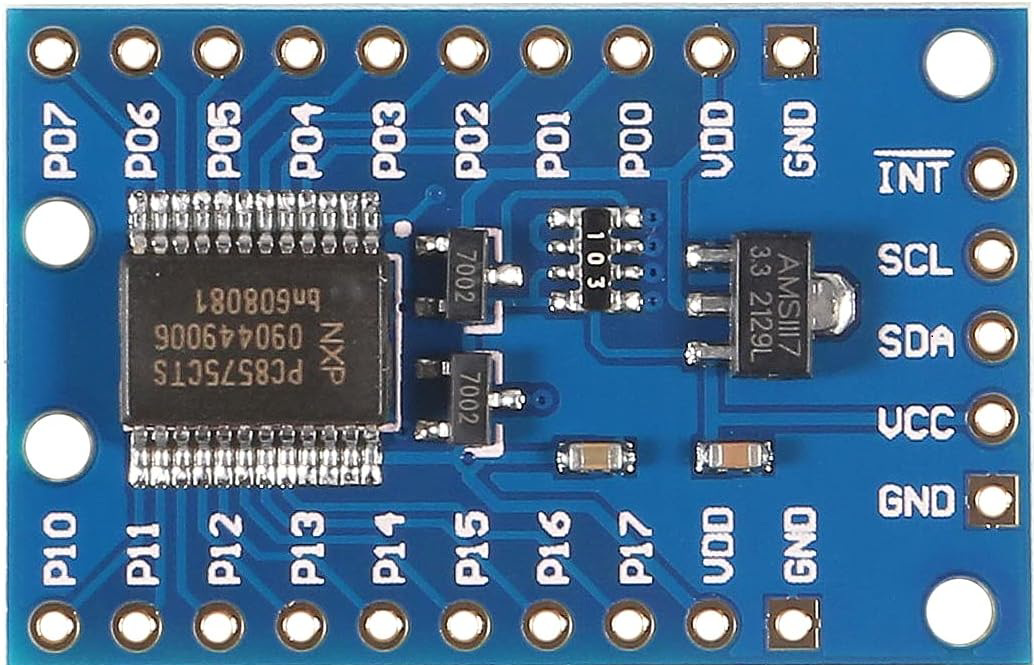
 Design with PCF8575 I2C Expander in Cirkit Designer
Design with PCF8575 I2C Expander in Cirkit DesignerIntroduction
The PCF8575 is a 16-bit I2C I/O port expander designed to extend the number of GPIO pins available to a microcontroller. It communicates via the I2C bus, requiring only two wires (SCL and SDA) for data transmission. This makes it an efficient solution for applications where GPIO pin availability is limited.
Common applications of the PCF8575 include:
- Expanding GPIO pins for microcontrollers in embedded systems.
- Controlling LEDs, relays, or other digital devices.
- Reading inputs from buttons, switches, or sensors.
- Building home automation systems or industrial control panels.
Explore Projects Built with PCF8575 I2C Expander
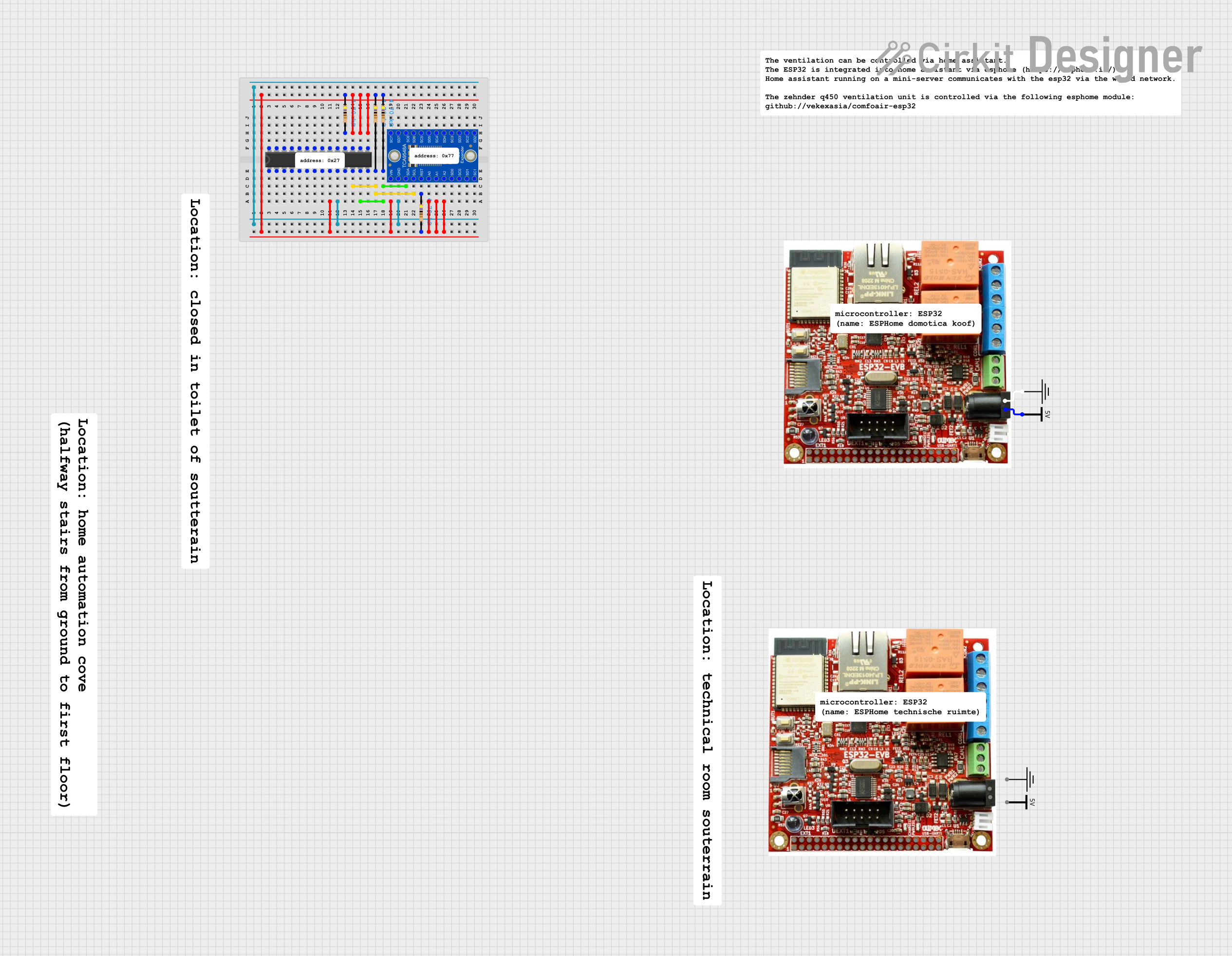
 Open Project in Cirkit Designer
Open Project in Cirkit Designer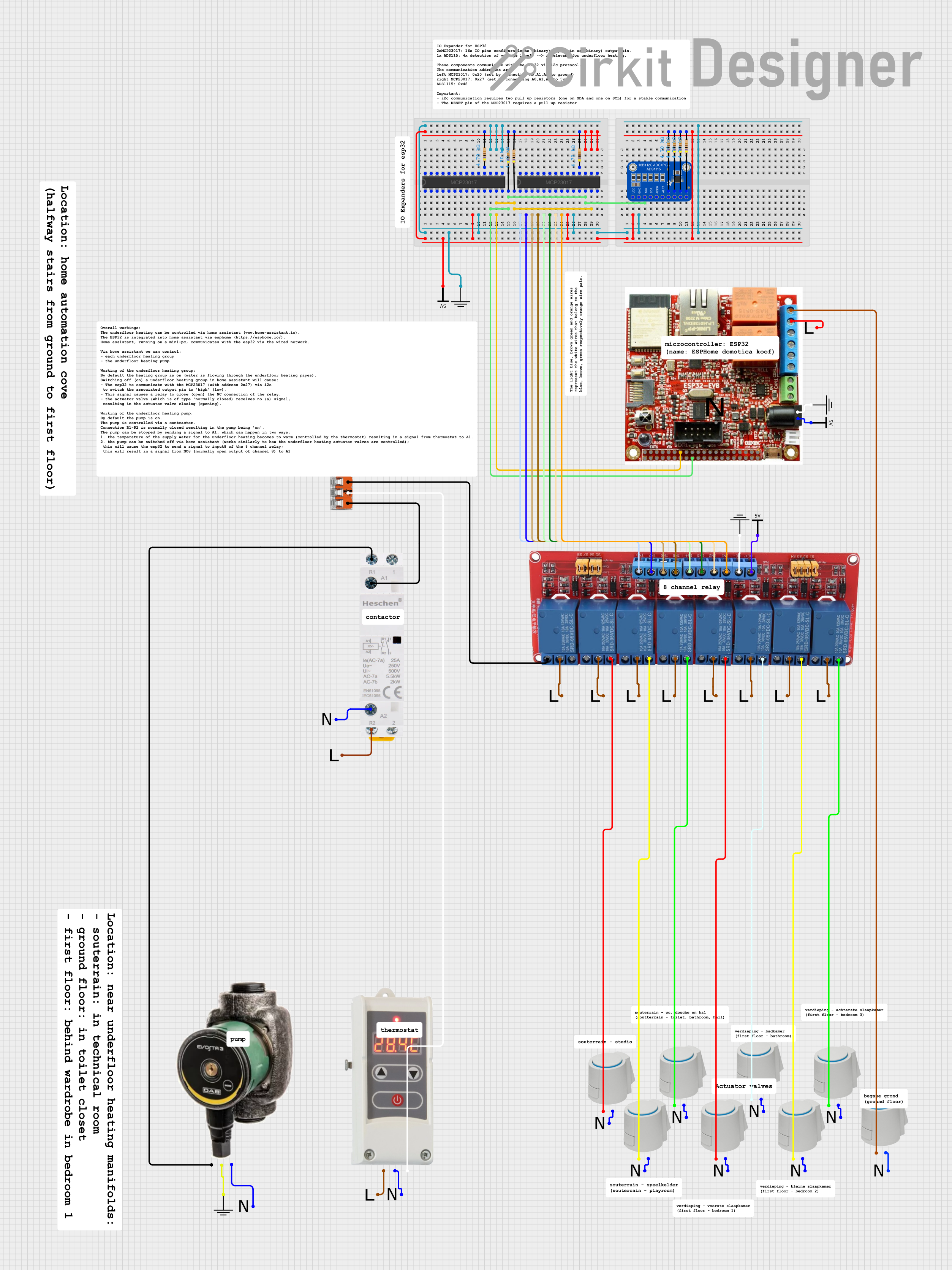
 Open Project in Cirkit Designer
Open Project in Cirkit Designer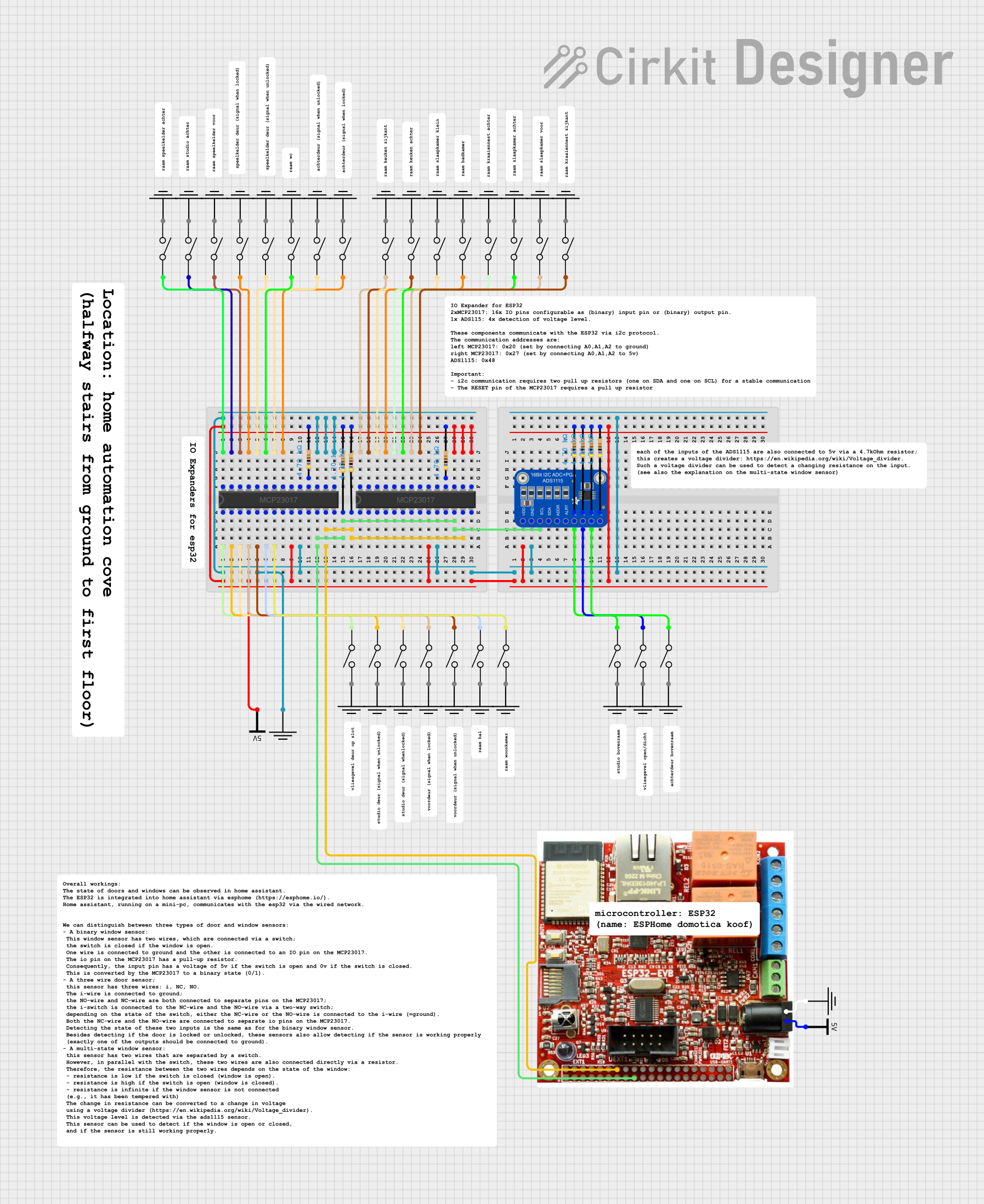
 Open Project in Cirkit Designer
Open Project in Cirkit Designer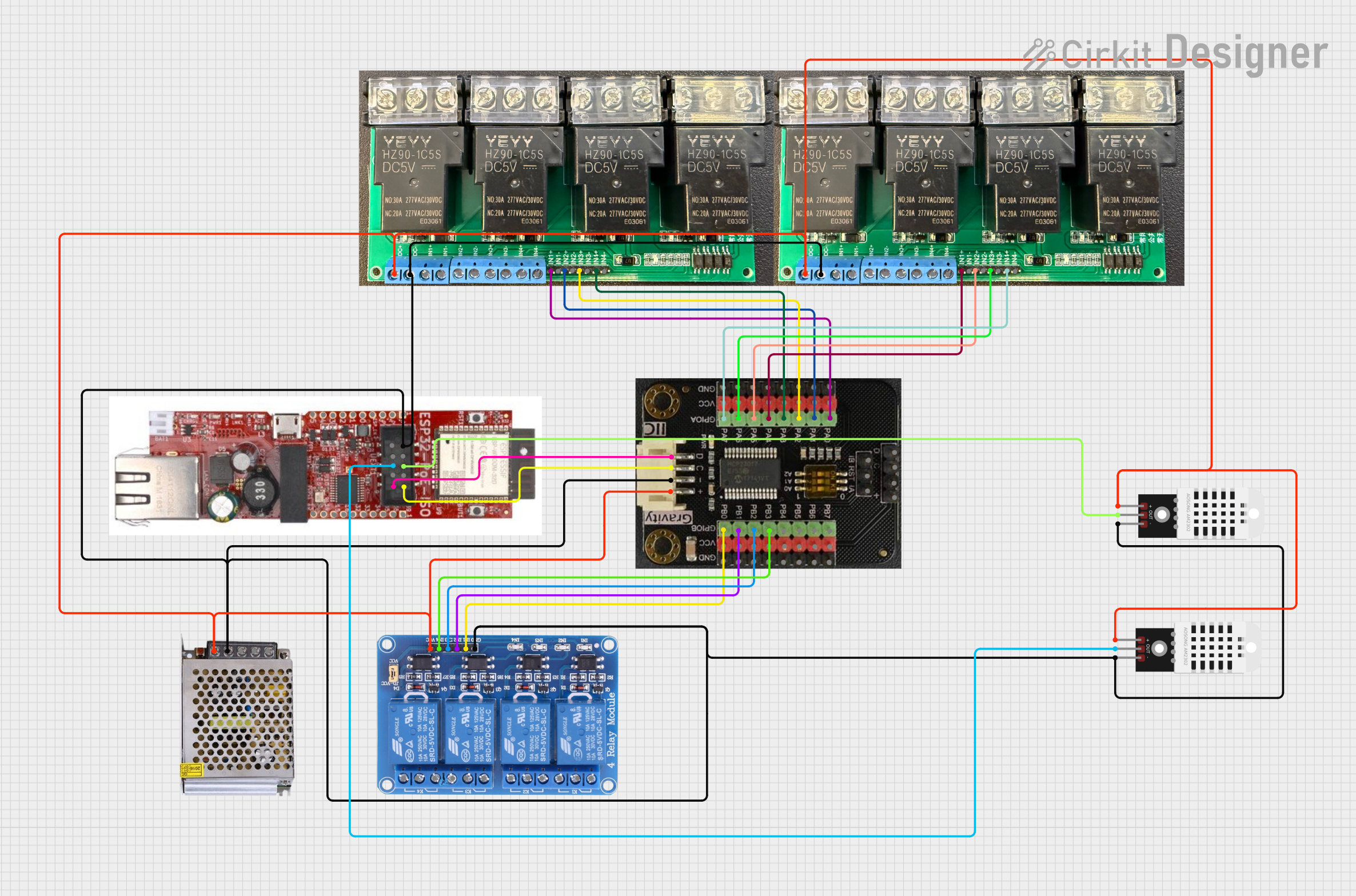
 Open Project in Cirkit Designer
Open Project in Cirkit DesignerExplore Projects Built with PCF8575 I2C Expander

 Open Project in Cirkit Designer
Open Project in Cirkit Designer
 Open Project in Cirkit Designer
Open Project in Cirkit Designer
 Open Project in Cirkit Designer
Open Project in Cirkit Designer
 Open Project in Cirkit Designer
Open Project in Cirkit DesignerTechnical Specifications
The PCF8575 has the following key technical details:
| Parameter | Value |
|---|---|
| Operating Voltage | 2.5V to 5.5V |
| Maximum Sink Current | 25 mA per pin |
| Maximum Source Current | -300 µA per pin |
| I2C Clock Frequency | Up to 400 kHz (Fast Mode) |
| Number of I/O Pins | 16 (P0.0 to P0.7, P1.0 to P1.7) |
| I2C Address Range | 0x20 to 0x27 (configurable) |
| Operating Temperature | -40°C to +85°C |
Pin Configuration and Descriptions
The PCF8575 is typically available in a 24-pin package. Below is the pinout description:
| Pin | Name | Description |
|---|---|---|
| 1-8 | P0.0-P0.7 | GPIO pins for Port 0 (bidirectional) |
| 9 | GND | Ground |
| 10-17 | P1.0-P1.7 | GPIO pins for Port 1 (bidirectional) |
| 18 | INT | Interrupt output (active LOW) |
| 19 | A0 | I2C address selection bit 0 |
| 20 | A1 | I2C address selection bit 1 |
| 21 | A2 | I2C address selection bit 2 |
| 22 | RESET | Active LOW reset input |
| 23 | SDA | I2C data line |
| 24 | SCL | I2C clock line |
Usage Instructions
How to Use the PCF8575 in a Circuit
- Power Supply: Connect the VCC pin to a 2.5V-5.5V power source and the GND pin to ground.
- I2C Connections: Connect the SDA and SCL pins to the corresponding I2C pins on the microcontroller. Use pull-up resistors (typically 4.7kΩ) on both lines.
- Address Configuration: Set the I2C address by connecting A0, A1, and A2 to either VCC (logic HIGH) or GND (logic LOW). This allows up to 8 PCF8575 devices on the same I2C bus.
- GPIO Pins: Use the P0.x and P1.x pins as inputs or outputs. Note that the pins are open-drain, so external pull-up resistors may be required for output operation.
- Interrupt Pin: The INT pin can be used to detect changes on input pins. It is active LOW and requires an external pull-up resistor.
Best Practices
- Use decoupling capacitors (e.g., 0.1 µF) near the VCC pin to stabilize the power supply.
- Avoid exceeding the maximum current ratings to prevent damage to the device.
- When using the GPIO pins as inputs, ensure proper pull-up or pull-down resistors are used to avoid floating states.
Example Code for Arduino UNO
Below is an example of how to use the PCF8575 with an Arduino UNO to toggle an LED connected to one of the GPIO pins:
#include <Wire.h>
#include <PCF8575.h> // Include the PCF8575 library
PCF8575 expander(0x20); // Initialize PCF8575 with I2C address 0x20
void setup() {
Wire.begin(); // Start the I2C bus
expander.begin(); // Initialize the PCF8575
expander.pinMode(0, OUTPUT); // Set P0.0 as an output pin
}
void loop() {
expander.digitalWrite(0, HIGH); // Turn on the LED connected to P0.0
delay(1000); // Wait for 1 second
expander.digitalWrite(0, LOW); // Turn off the LED
delay(1000); // Wait for 1 second
}
Notes:
- The
PCF8575.hlibrary can be installed via the Arduino Library Manager. - Replace
0x20with the actual I2C address of your PCF8575 if it differs.
Troubleshooting and FAQs
Common Issues
Device Not Responding on I2C Bus:
- Ensure the correct I2C address is used.
- Verify that pull-up resistors are connected to the SDA and SCL lines.
- Check the wiring for loose or incorrect connections.
GPIO Pins Not Functioning as Expected:
- Confirm the pin mode (input/output) is correctly configured in the code.
- Check for proper pull-up or pull-down resistors on the pins.
Interrupt Pin Not Triggering:
- Ensure the INT pin is connected to a pull-up resistor.
- Verify that the input pins are configured correctly and are changing state.
Tips for Troubleshooting
- Use an I2C scanner sketch to detect the PCF8575 on the I2C bus.
- Measure the voltage levels on the SDA and SCL lines to ensure they are within the expected range.
- Test the GPIO pins individually to isolate any faulty connections or components.
By following this documentation, you should be able to successfully integrate the PCF8575 I2C expander into your projects and troubleshoot any issues that arise.